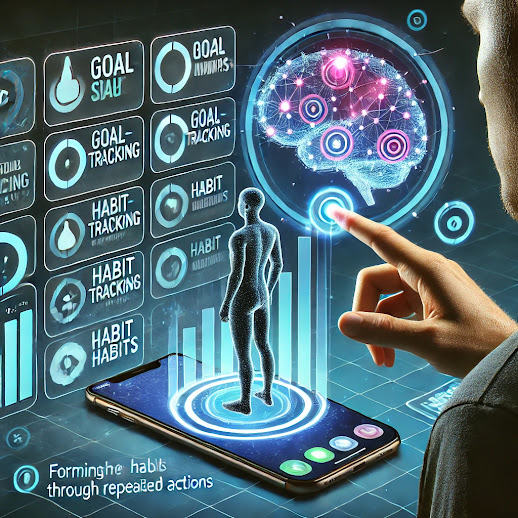The Internet changed the world. Suddenly, instant access and connectivity to knowledge around the world was possible. Smartphones have brought the power of personal computers, laptops, and internet connectivity into our pockets.
The rise of smartphones has given birth to a plethora of applications, each designed to cater to our unique needs and interests. These apps, adaptable to both mobile phones and tablets, can be downloaded and used even without an internet connection. This adaptability ensures that there's a perfect app out there for everyone, making goal-setting more accessible and convenient than ever before.
With the majority of us carrying our smartphones at all times, the power to set and pursue our goals is just a few taps away. This convenience puts you in the driver's seat, empowering you to take control of your aspirations with ease.
Repeated Conscious Actions Become Unconscious Habits
The subconscious part of your incredible mind influences 90% to 95% of your experience. Your conscience handles the rest. As you can see, your conscious brain is not nearly as capable as your subconscious.
So, when your subconscious notices you consciously repeating a process or action, it takes control. It tells your conscience, "I've got this. I will put this on autopilot so you can spend your limited abilities elsewhere."
How can you use this natural, programmable feature of your mind to help you achieve your goals? Here's a step-by-step guide:
- Step 1: Download one of the following six apps to the home screen of your mobile phone or tablet: Habitica, DONE, Strides, Way of Life, GoalsOnTrack, ClickUp.
- Step 2: Set a schedule and consciously access the app simultaneously each day.
- Step 3: Use the app's features to track your progress.
- Step 4: Over time, this will become an unconscious habit that will lead you to success.
ClickUp has a wonderful feature that some other goal-setting apps don't. It lets you set your goals and then break them down into smaller, achievable targets that are easier to track. Strides has an easy-to-use interface and offers daily reminders to take action, progress reports, and other nice features.
GoalsOnTrack is available for desktop PCs and mobile devices. It's great for breaking large, ambitious goals into smaller steps. It works on the SMART goal framework, which means that goals should be Specific, Measurable, Achievable, Relevant, and Time-Bound. This framework ensures that you have clear and realistic goals and a specific completion timeline, increasing your chances of success.
Habitica turns goals into a game. Your goals become quests, presenting productivity-crushing bad habits as monsters to be defeated. Way of Life helps you create individualized daily habits and provides graphs to track your progress over weeks, months, and years.
If you're still striving to achieve your dreams, it's time to harness the power of technology. By consciously using a goal-setting app every day, you're not just setting goals-you're paving the way for a transformative subconscious habit that propels you towards your desired success. This potential for transformation should fill you with hope and optimism.








